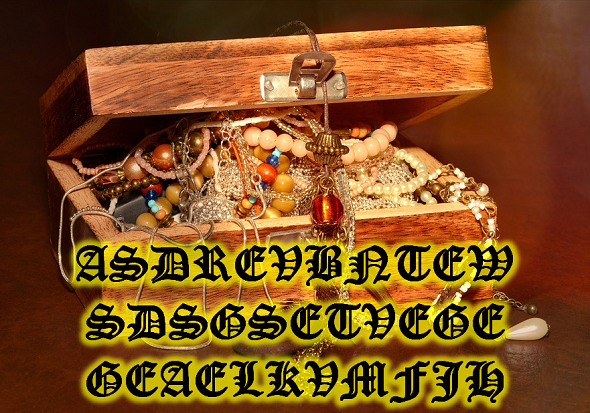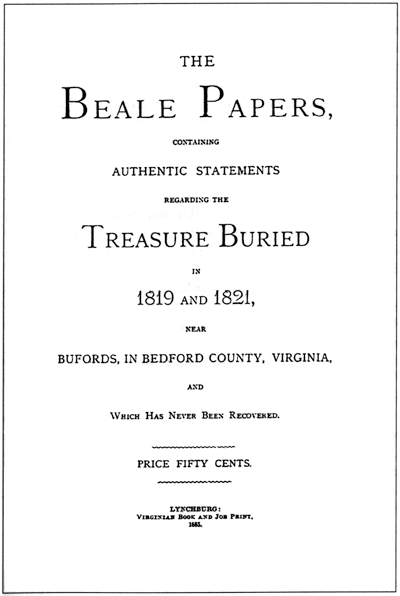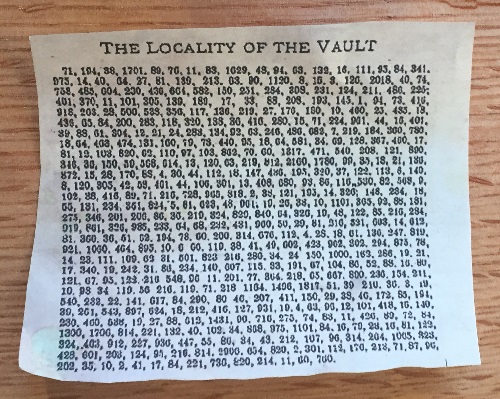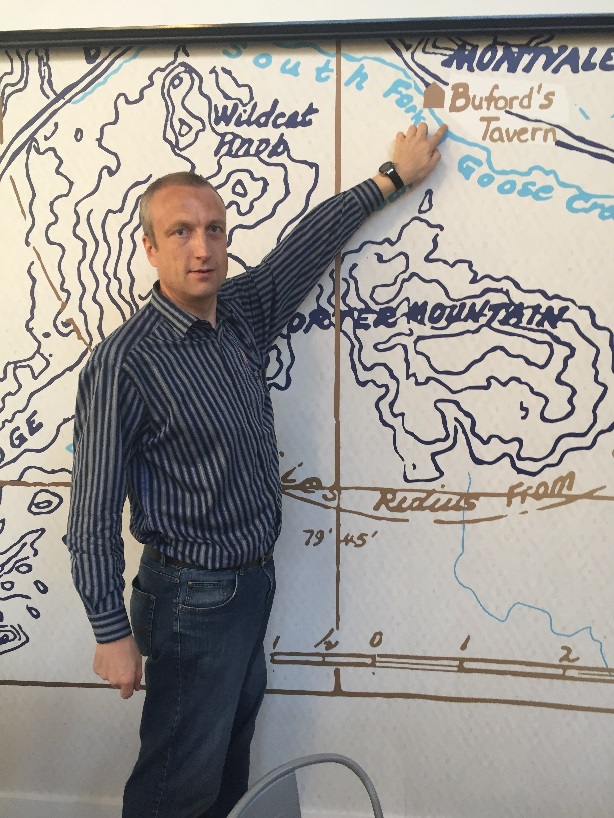Among the most popular stories in cryptology are those about a hidden treasure, the location of which is described in an encrypted text. Here are three stories of this kind.
In 1885, a small publishing house located in Lynchburg, Virginia, published a book titled The Beale Papers, which had the appearance of a trashy novel. The plot was about a number of buffalo hunters, who found gold in a canyon in New Mexico. One of the hunters left behind three encrypted notes that contained a description of the place where the gold was hidden (allegedly near a place named Buford’s in Virginia).
The publisher of the book, a certain James Ward, claimed that this story was true.
The Beale story is not the only one that reports about a hidden treasure and a cryptogram that explains where it is located. Five other stories of this kind are known to me. Today, I’m going to report on three of them.
The Beale Treasure
If one believes the story told in The Beale Papers, the three cryptograms described in this book contain information about the hiding place of tons of gold – provided they can be deciphered. So far, only one of three notes has been broken. The cleartext provided some additional information about the Buffalo hunters, but not the location of the treasure. Instead, this information is described in one of the two messages that are still unsolved.
The details of the Beale cryptograms have been described so many times before that I don’t want to write down this story again. Instead, I quote Wikipedia:
[The] treasure [was] buried by a man named Thomas J. Beale in a secret location in Bedford County, Virginia, in the 1820s. Beale entrusted a box containing the encrypted messages to a local innkeeper named Robert Morriss and then disappeared, never to be seen again. According to the story, the innkeeper opened the box 23 years later, and then decades after that gave the three encrypted ciphertexts to a friend before he died. The friend then spent the next twenty years of his life trying to decode the messages, and was able to solve only one of them which gave details of the treasure buried and the general location of the treasure. The unnamed friend then published all three ciphertexts in a pamphlet which was advertised for sale in the 1880s. Since the publication of the pamphlet, a number of attempts have been made to decode the two remaining ciphertexts and to locate the treasure, but all efforts have resulted in failure.
The following picture was taken at a Restaurant named Beale’s in Bedford:
The Beale story is by no doubt a great one, but it has a serious flaw: It can’t be true. The whole story is full of implausibilities. Here are a few (the list is far from complete):
- The Ward book (i.e., a kind of trashy novel) is the only source for this story.
- The place where the buffalo hunters found the gold has never been located.
- The originals of the Beale cryptograms are lost.
- It is unclear why Beale would have bothered writing three different ciphertexts for what is essentially a single message.
- Joe Nickell, a renowned forgery expert and (like me) a member of the skeptics movement, has analyzed the language of the Ward booklet and of Beale’s letters using stylometry. The result suggests that they may have been written by the same person.
- According to the Ward book, Robert Morriss was running the Washington Hotel in 1820. However, contemporary records show he did not start in that position until at least 1823.
- The cipher method used to encrypt the second note (the one that was deciphered) was a pretty strong one for the time. Almost all encryption algorithms used four decades later in the Civil War were considerably weaker. It is certainly amazing that a buffalo hunter knew this elaborate system. However, if we assume that the whole story is a fake and that this cryptogram was created in the 1880s, the situation becomes completely different. In the meantime, authors like Edgar Allan Poe had made cryptography popular in the USA. In the Civil War, in which encryption played an important role, many soldiers became familiar with ciphers. After the presidential election of 1876, US newspapers reported on their title pages about hundreds of encrypted telegrams sent by the candidate’s supporters in order to manipulate the outcome of the election. All this means that in the 1880s many Americans were well enough informed about cryptology to know and use such an encryption method.
Is the story true? No, it’s a hoax.






Kommentare (3)